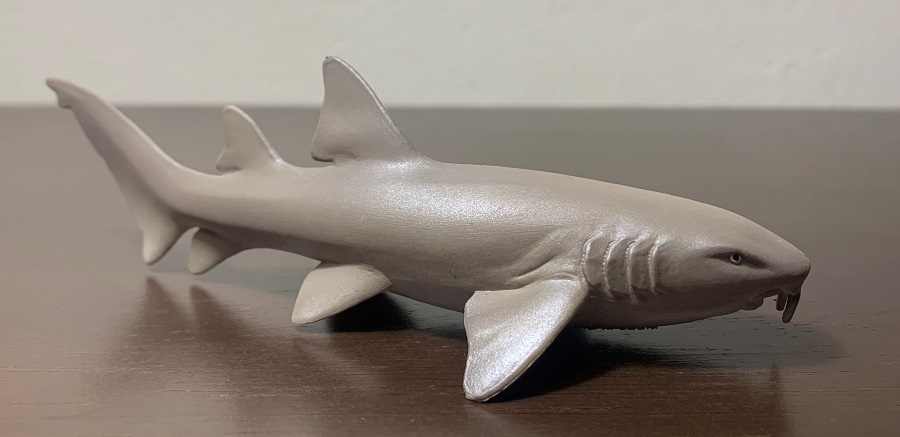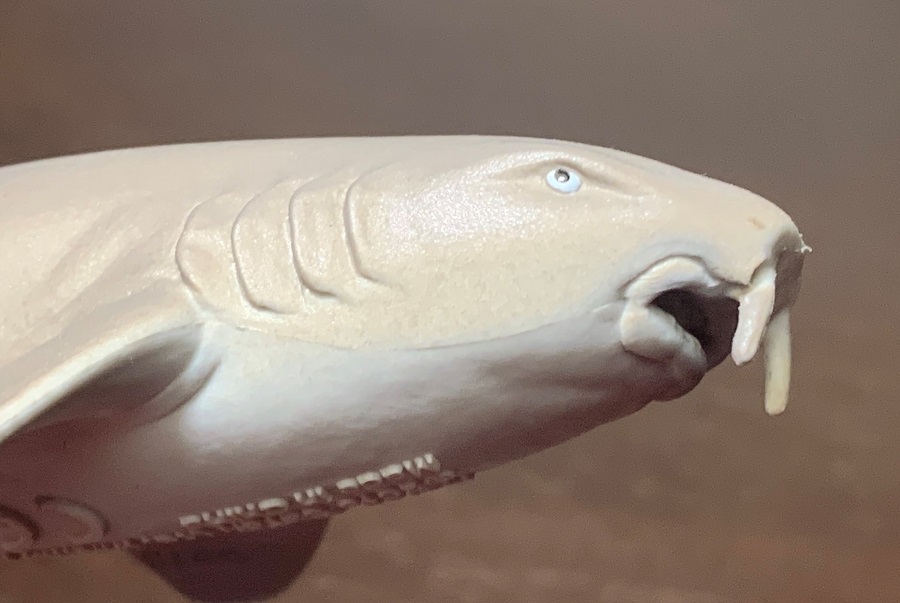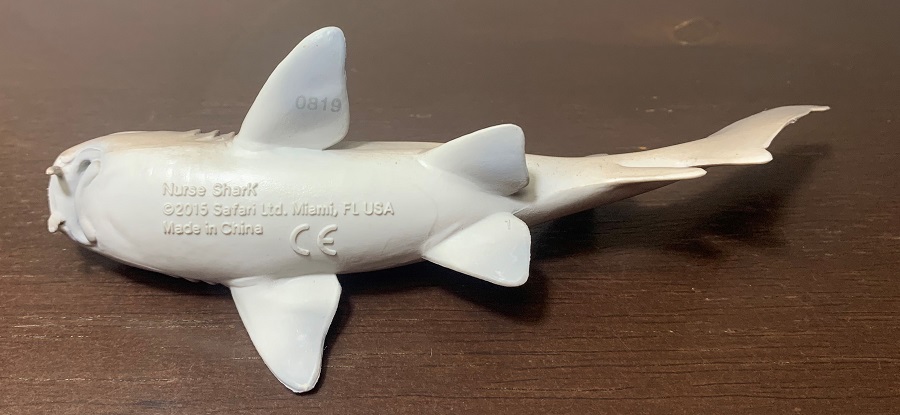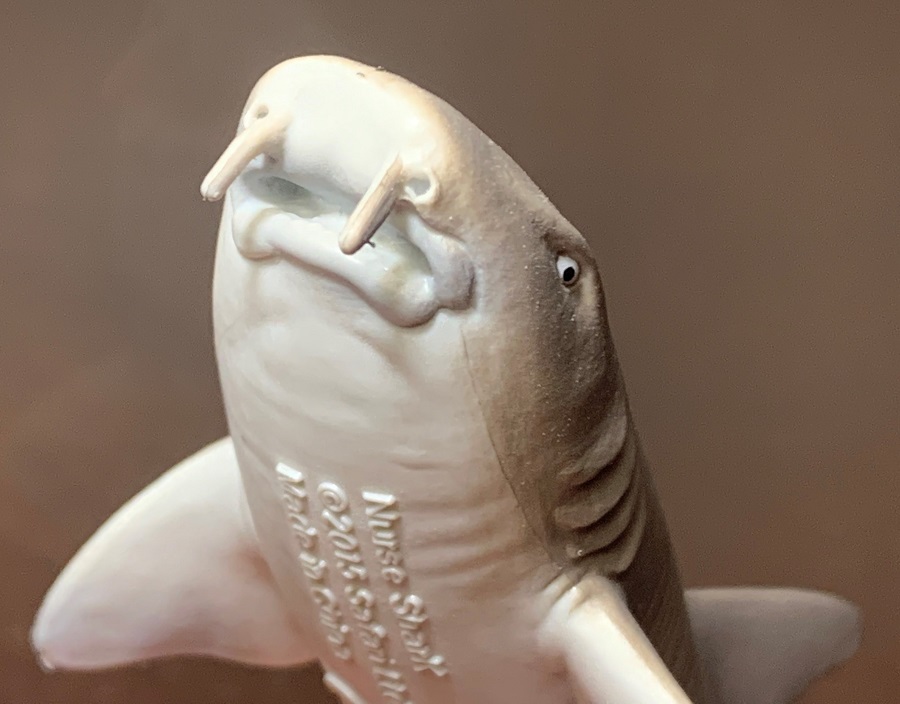Well, this upcoming week is Shark Week (and Shark Fest was last week, apparently) so here’s our mandatory shark review to celebrate the event. Not that we need an excuse to review sharks, we appreciate sharks all year long around here. Counting this review, I’ve now covered a baker’s dozen cartilaginous fishes. Today we’re looking at the Safari 2015 nurse shark (Ginglymostoma cirratum), a familiar species that’s frequently encountered by SCUBA divers and in public aquaria.

Nurse sharks are members of the carpet shark order, the Orectolobiformes, along with other familiar species like the whale, bamboo, wobbegong, and zebra sharks. They occur in nearshore habitats in the sub-tropical and tropical eastern and western Atlantic coasts of the Americas, as well as the north-western coast of Africa, and has been documented in the Gulf of Gascogne in southwest France.

The Safari nurse shark measures 5.5” (13.9 cm) while the actual nurse shark can reach a maximum length of 10’ (3 meters) but average a few feet smaller. This puts the Safari nurse shark at about 1/20 in scale. It is presented in a static pose with a slight curve of the body towards the left.

Nurse sharks are a nocturnal species that spend most of the day lying on the sea bottom. Their generally docile nature is often taken for granted and although unprovoked attacks are rare, they have been known to bite humans when harassed. Nurse sharks feed on a variety of fishes, stingrays, crustaceans, and mollusks. They are capable of sucking conches out of their shells and this ability, combined with their strong locking jaws, makes a nurse shark bite an unpleasant experience.

Safari has done an admirable job with this figure. The mouth and barbels are particularly well done and the head is broad and flat with small eyes. The first and second dorsal fins are rounded and placed close together, the origin of the 1st dorsal being close to the pelvic fin origin. The 2nd dorsal fin is slightly smaller than the first and the caudal fin is elongated with the upper lobe longer than the lower lobe. The figure lacks claspers, making this toy a female.

The only flaw I can see is that the figure is missing a gill slit, having only four on each side instead of 5. It should be noted however that on nurse sharks the 4th and 5th gill slits are so close together that they almost overlap. Pictures of nurse sharks give the illusion that they only have 4, so the omission of a gill slit on this figure is forgivable.

The Safari nurse shark is pale brown with a gradual fading to white on the underside, the eyes are white with black pupils. Adult coloration varies from yellow to brown to gray. Younger sharks have black spots outlined in white. Nurse sharks are ovoviviparous, meaning they develop within eggs inside the parent and are then born live. Aside from other sharks, and humans, the nurse shark has no natural predators. The nurse shark is not endangered but like most sharks is at risk due to human exploitation.

The Safari nurse shark is yet another fantastic shark from Safari Ltd., who I think it’s safe to say has the toy shark market cornered at this point. The Safari nurse shark is still in production and sells for about $6.50, celebrate this Shark Week by picking one up.


Disclaimer: links to Ebay and Amazon on the AnimalToyBlog are affiliate links, so we make a small commission if you use them. Thanks for supporting us!




Always enjoyed watching nurse sharks in aquariums. Even got to see them being fed once in Washington DC back in 1985.